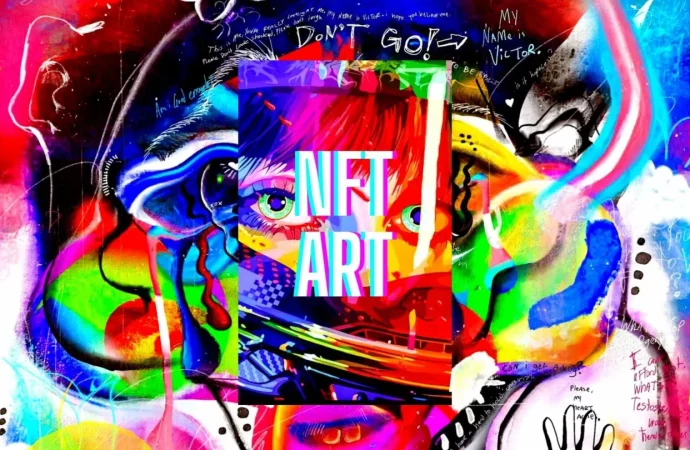Introduction Non-fungible tokens (NFTs) have created a wave of transformation in the digital art space. With their rise, artists and collectors have found new ways to interact, monetize, and preserve digital creations. This article explores the impact of NFTs on the digital art world, analyzing their benefits, challenges, and future potential. What Are NFTs and
Introduction
Non-fungible tokens (NFTs) have created a wave of transformation in the digital art space. With their rise, artists and collectors have found new ways to interact, monetize, and preserve digital creations. This article explores the impact of NFTs on the digital art world, analyzing their benefits, challenges, and future potential.
What Are NFTs and How Do They Work?

Image by: Yandex.com
NFTs are blockchain-based tokens that represent ownership of digital items, including art. Each NFT is one-of-a-kind, making it impossible to exchange one for another directly, unlike traditional currencies. NFTs are stored on a blockchain, ensuring their authenticity and preventing duplication.
For artists, NFTs eliminate the risk of unauthorized reproduction. Buyers receive a digital certificate of ownership, even for items accessible online to the public.
The Rise of NFTs in Digital Art
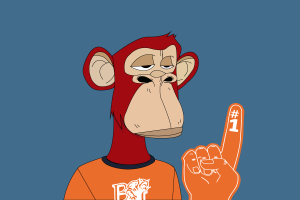
Image by: Yandex.com
NFTs, or non-fungible tokens, have quickly become a big deal in the world of digital art. They allow artists to sell their work online in a unique way. Unlike regular digital files that can be copied, NFTs prove ownership and authenticity. This technology has made digital art more valuable and has opened up new opportunities for creators.
NFTs: Transforming the Digital Art Market

Image by: Yandex.com
NFTs have democratized access to the art world by enabling artists to reach global audiences without intermediaries. Artists can sell their work directly to collectors, and royalties can be programmed into the NFT, ensuring they earn revenue from future resales.
On the other hand, collectors benefit from secure ownership, and the transparency of blockchain provides assurance regarding the provenance of art pieces.
NFTs Create New Art Markets

Image by: Yandex.com
NFTs have opened up new markets for art that didn’t exist before. Artists can now sell their work directly to buyers all over the world. This global reach means that artists no longer have to rely on local galleries or physical spaces to showcase their art. Buyers also get access to a wider variety of art from creators they might not have found otherwise.
NFTs Make Art Collecting Easier
With NFTs, buying and collecting art has become more straightforward. Collectors don’t need to worry about storing physical art or verifying its authenticity. The blockchain tracks ownership, so buyers can easily prove they own a piece of art, and they can resell it if they want. This makes collecting digital art a safer and more organized experience.
NFTs and the Value of Digital Art
NFTs have increased the value of digital art. Before NFTs, it was hard to sell digital creations for high prices since they could be easily copied and shared. But with NFTs, each digital artwork has a unique, verifiable ownership record. This gives digital art a sense of rarity, making it more valuable in the eyes of collectors and investors.
Risks for Buyers and Artists
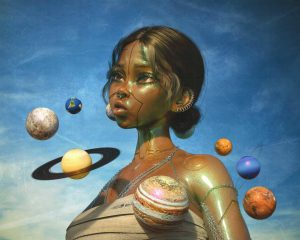
Image by: Yandex.com
While NFTs offer many benefits, they also come with risks. For buyers, the value of an NFT can change quickly. The art might not sell for as much as expected, or the market could crash. For artists, there is always the possibility that their art might not sell at all. These risks make it important for both buyers and sellers to carefully consider their decisions.
The Growth of NFT Art Communities
NFTs have helped create strong communities of artists, collectors, and fans. Many NFT platforms have spaces where artists can connect with each other and share their work. These communities offer support and help build relationships between creators and collectors. Artists can also get feedback on their work and grow their following, which can lead to more sales.
NFTs Are Changing the Art World Forever
NFTs are likely here to stay and will continue to shape the future of the art world. They’ve brought digital art into the spotlight and created new ways for artists to earn money. Although there are challenges, such as high fees and environmental concerns, NFTs have opened up exciting possibilities for the art world. As technology improves and the market matures, NFTs will keep transforming how art is created, bought, and sold.
The Appeal of Digital Art Through NFTs

Image by: Yandex.com
One of the biggest reasons NFTs are so popular is that they make digital art more appealing to collectors. Before NFTs, digital art could be copied and shared easily, which made it hard to assign value to it. NFTs solve this problem by giving each piece of digital art a unique identity. This helps collectors feel confident in their purchase, knowing that they own a one-of-a-kind piece.
NFTs and the Rise of Virtual Galleries
NFTs have also led to the rise of virtual art galleries. These online spaces allow artists to display their NFTs and connect with potential buyers. Instead of visiting a physical gallery, people can now explore and buy digital art from the comfort of their homes. Virtual galleries have made it easier for artists to reach global audiences, and it’s opening up a whole new way to experience art.
Benefits of NFTs in Digital Art
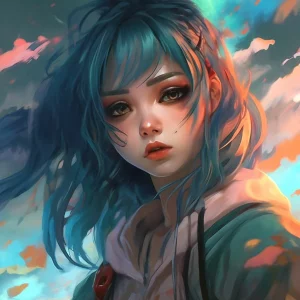
Image by: Yandex.com
1. New Revenue Streams for Artists
NFTs allow artists to sell their work directly to collectors without intermediaries, ensuring fair compensation. Additionally, smart contracts enable artists to earn royalties every time their NFT is resold, creating a continuous income stream.
2. Democratization of Art
NFTs lower entry barriers for creators worldwide. Digital artists, who previously struggled to gain recognition, can now showcase their work on platforms like OpenSea, Rarible, and Foundation.
3. Ownership and Provenance
Blockchain provides a transparent record of ownership and transaction history, eliminating the risk of forgery or duplication in the art market. Collectors can verify the authenticity of their purchases effortlessly.
NFTs Are Creating New Forms of Art
NFTs are not just changing how we buy and sell art—they’re also inspiring new forms of digital creativity. Some artists are creating interactive or animated pieces that would never have been possible with traditional art. Others are blending art with technology, creating experiences that are unique to the NFT space. This new creative freedom is opening up exciting possibilities for artists and collectors alike.
The Role of NFTs in Changing the Art World

Image by: Yandex.com
NFTs are changing how people think about art. Before, digital art wasn’t considered as valuable as physical art. But NFTs are proving that digital creations can be just as special. They’ve also shifted attention from traditional art galleries to online platforms, giving digital artists a new stage to shine.
A New Way to Buy and Sell Art
NFTs have changed how people buy and sell art. In the past, artists relied on galleries and art dealers to sell their work. Now, they can connect directly with buyers online. This not only saves time and money but also gives artists more control over their work.
NFTs Bring More Attention to Digital Art
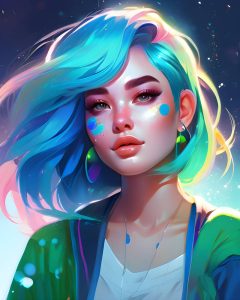
Image by: Yandex.com
Before NFTs, digital art didn’t get much attention compared to traditional art like paintings or sculptures. Many people didn’t see it as “real art.” But NFTs have changed that. Now, digital creations are seen as valuable, and some have sold for millions of dollars.
Supporting New Artists
NFTs are helping new and lesser-known artists get noticed. Platforms like OpenSea and Foundation let artists from all over the world share their work. Buyers can explore art from creators they may never have heard of before, giving new artists a chance to shine.
The Problem of High Fees
While NFTs offer many benefits, they can be expensive to create and sell. Artists often have to pay high fees to mint (create) their NFTs and list them on platforms. These costs can make it harder for smaller or new artists to join the NFT market.
NFTs and the Environment
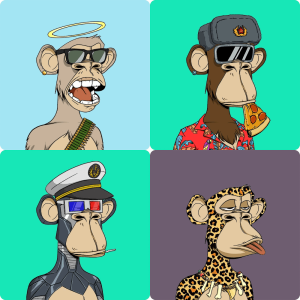
Image by: Yandex.com
A big concern with NFTs is their impact on the environment. The process of creating and selling NFTs uses a lot of energy because it relies on blockchain technology. However, new solutions are being developed to make NFTs more eco-friendly in the future.
Learning to Use NFTs
For some people, understanding NFTs can be tricky. The technology and terms might seem complicated. Artists and buyers need to learn how blockchain works and how to create, buy, or sell NFTs. As more tools and guides become available, this should become easier over time.
Challenges of NFTs in the Digital Art World
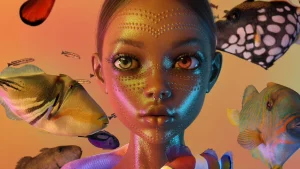
Image by: Yandex.com
1. Environmental Concerns
Minting NFTs consumes significant energy due to the blockchain technology behind them, particularly on networks like Ethereum. This has sparked debates about the environmental sustainability of NFTs.
2. Market Volatility
The NFT market is highly speculative. Prices can fluctuate drastically, making it risky for both artists and collectors to invest in this space.
3. Accessibility Issues
While NFTs open opportunities, creating and trading them often involves technical knowledge and high fees, which can be prohibitive for some artists and collectors.
How NFTs Are Reshaping the Art Ecosystem
NFTs have shifted the focus from traditional art galleries to decentralized platforms. Digital art, once undervalued, is now gaining prominence, with some pieces selling for millions of dollars. This new ecosystem fosters collaboration between artists, developers, and collectors, creating a dynamic marketplace.
Future Prospects for NFTs in Digital Art
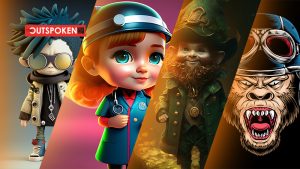
Image by: Yandex.com
The NFT space continues to evolve. With advancements in eco-friendly blockchain technologies, the environmental impact may reduce over time. Moreover, as the technology becomes more accessible, a larger pool of artists and collectors will likely participate in the NFT revolution.
Analysis Table: Pros and Cons of NFTs in Digital Art
| Aspect | Advantages | Disadvantages |
|---|---|---|
| Monetization | Direct sales and royalties for artists | High transaction costs |
| Ownership Transparency | Clear provenance through blockchain | Complexity of verification for newcomers |
| Accessibility | Opportunities for global artists | High fees and technical barriers |
| Market Growth | Expanding digital art recognition | Market unpredictability |
| Environmental Impact | New eco-friendly innovations in progress | High energy consumption |
Comparative Table: Traditional Art vs. NFT Art
| Feature | Traditional Art | NFT Art |
|---|---|---|
| Ownership Verification | Physical certification required | Blockchain ensures authenticity |
| Distribution | Relies on galleries and auctions | Decentralized platforms like OpenSea |
| Revenue Model | Single sale per artwork | Includes royalties from secondary sales |
| Accessibility | Often limited to elite circles | Open to global participation |
| Environmental Impact | Minimal | Significant but improving |
Conclusion: A New Era for Digital Art
NFTs have opened doors for artists and collectors, transforming the digital art world with their innovative approach to ownership and sales. While the journey is not without challenges, the potential for positive change outweighs the risks. For NFTs to sustain their influence, addressing environmental concerns and clarifying legal frameworks will be crucial.

